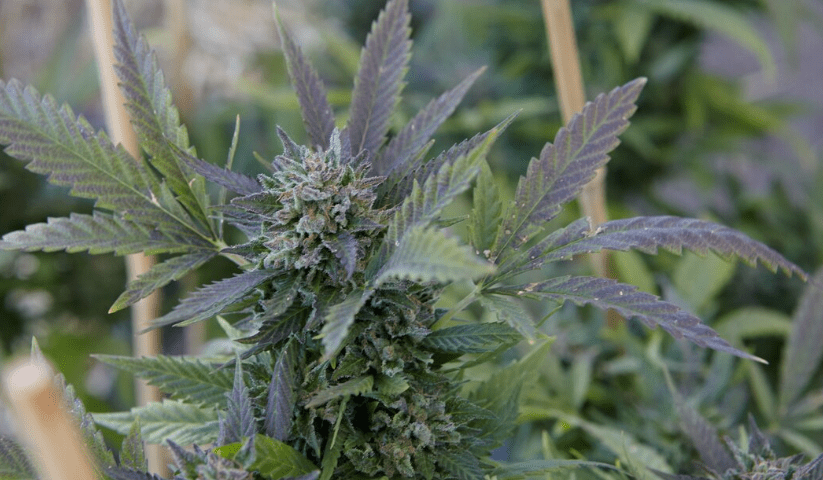
Cannabis sativa
Latin name: Cannabis sativa
Short name: Cann-s
Common name: Hemp | Common Hemp | Indian Hemp (though the latter more properly refers to Cannabis indica) | True Hemp
Primary miasm: Sycotic Secondary miasm(s): Psoric
Kingdom: Plants
Family: Cannabaceae
- Symptomatology
- Remedy Information
- Differentiation & Application
An annual herb of the Cannabaceae family, cultivated for millennia for its fibre (hemp), seed oil, and medicinal resin. Native to Central Asia but now widely grown. The fresh flowering tops of the male plant are used for the homeopathic preparation, macerated in alcohol to produce the mother tincture.
In industry for hemp fibre (rope, cloth, canvas, paper), hemp seeds (nutritional oil), and, in some cultures, medicinally for analgesic and anti-inflammatory properties. Recreational and ritual use of Cannabis resin and flowers dates back thousands of years.
First homeopathic provings recorded by Hahnemann’s contemporaries in the early 19th century. Symptoms confirmed and expanded by Hering, Allen, and later compilers.
- Urinary organs – Especially bladder, urethra, prostate; marked action in acute and subacute inflammation [Hering].
- Genital system – Both male and female sexual sphere, particularly functional disturbances and heightened sexual desire.
- Nervous system – Sensorium, coordination, memory; tendency to confusion, loss of sequence [Allen].
- Mind – Peculiar mental symptoms including altered perception of time and space [Clarke].
- Joints and muscles – Especially lower limbs, with weakness, trembling, and impaired locomotion.
- Rest, lying down [Allen].
- Cold applications to inflamed parts.
- Passing urine relieves some urinary discomfort.
- Walking or standing for long periods; aggravates urinary and genital symptoms.
- Night, for mental restlessness and sexual excitement.
- After coition; aggravation of urethral burning and backache [Hering].
- Cannabis indica – More pronounced mental distortions and hallucinations; Cannabis sativa has a stronger urinary-genital focus.
- Cantharis – Intense burning before, during, and after urination; Cann-s. less violent but more chronic.
- Sabal serrulata – Chronic prostatitis, less acute burning than Cann-s.
- Pareira brava – Severe straining with pain radiating down thighs; Cann-s. less radiation.
- Complementary: Cantharis, Thuja.
- Antidotes: Lemon juice, camphor.
- Follows well: Aconite in acute onset of urinary inflammation
A remedy of distortion and irritation — where perception (especially of time and space) is altered, and where burning, inflamed mucous membranes of the urinary tract dominate the picture. The mental state shows confusion, loss of continuity, and alternating gaiety and anxiety. The physical state is dominated by an overactive sexual sphere with consequent exhaustion.
- In acute gonorrhoea with burning urethral pain and constant urging, it is often useful after Aconite.
- Chronic gleet with post-urination dribbling responds well.
- In women, valuable for post-coital burning or sexual hyperaesthesia linked to urinary irritation.
Mind:
- Delusions of altered space and time.
- Forgetful, loses thread of conversation.
- Alternating gaiety and sadness.
Urinary:
- Burning in urethra during and after urination.
- Frequent urging with scanty urine.
- Dribbling after urination.
Male:
- Increased sexual desire.
- Erections, frequent and painful.
- Emissions with or without dreams.
Female:
- Increased sexual desire.
- Burning after coition.
Extremities:
- Weakness in legs.
- Trembling after exertion.
Generalities:
- Weakness after coition.
- Aggravation from prolonged standing.
- Hering, C. – Guiding Symptoms: Detailed urinary-genital sphere symptoms.
- Allen, T.F. – Encyclopaedia: Full proving details, especially altered perceptions.
- Clarke, J.H. – Dictionary: Time and space distortions, chronic urinary indications.
- Hughes, R. – Cyclopaedia: Pharmacodynamic notes.
- Boericke, W. – Pocket Manual: Concise clinical applications.
- Farrington, E.A. – Clinical MM: Comparative genital-urinary indications.
- Kent, J.T. – Lectures: Commentary on mental sphere.
- Lippe, A. – Keynotes: Burning in urethra after urination.
- Nash, E.B. – Leaders: Gonorrhoeal history.
- Boger, C.M. – Synoptic Key: Characteristic urinary notes.
